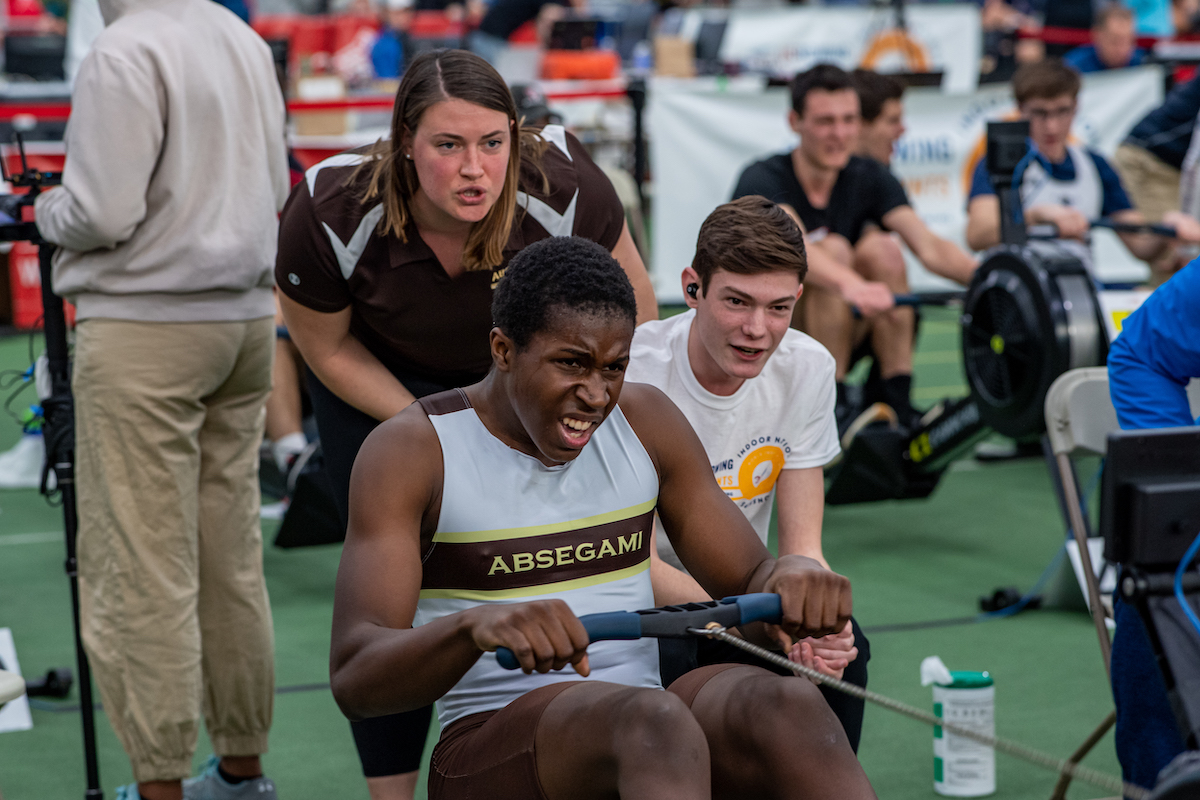After our first fall season, most of us stick with coxing because we realize that the feeling of slicing through the water in a really powerful boat is intoxicating, not because we want to walk around a musty erg room with clipboards for four months.
To continue reading…
Register for free to get limited access to the best reporting available.
Free accounts can read one story a month without paying.
Or subscribe to get unlimited access to the best reporting available.
To learn about group subscriptions, click here.
Already a subscriber? Login
When you’re indoors, it’s hard to stay engaged. Your role is much less defined, making it easy to feel bored, aimless, and apathetic about coxing. If you’re serious about your role on the team, though, you’ll realize that there are just as many opportunities to get better and faster in the winter as there are on the water.
Work out with the team: This doesn’t mean you have to get on the erg and do pieces with them but you can participate in running a stadium or doing body-weight and core circuits. While the team is doing steady-state pieces, you can get on the bike also and do pieces of comparable intensity, all while continuing to call switches in rate and when pieces start and stop.
The goal isn’t to match what the rowers are doing but to do as much as you’re capable. The fact that your teammates see you doing something (and taking it seriously) will earn their trust, respect, and loyalty. It’s also about learning the true definition of “more.” If you’re seeing stars at the end of a stadium, which is how your rowers feel when they’re gassed at the end of a piece, they’ll know that when you ask for “more” you’ve been there, too, and that you get what it means to go until you can’t go anymore and give until there’s nothing left to give.
Observe individuals on the erg: From a technical standpoint, winter training is an excellent time to follow each rower closely to see how he or she responds to training at increasing levels of exhaustion. By isolating their bodies and observing them individually instead of as part of a larger crew, you can determine how they respond to the intensity or duration of a piece by noting changes in technique and rhythm, etc. Keep your notebook on hand so you can record what you’re seeing and what the coach is saying so you can fashion customized calls later on.
Learn how to call drills effectively: This was a regular part of winter training for coxswains when I was in high school. Frequently, as part of the warm-up, we would do the same technical drills on the ergs that we’d do on the water, and we coxswains were responsible for their execution.
I remember being super-intimidated the first time I had to do it, but a varsity coxswain told me they were all bad at it at first and had no idea what to say. This exercise is what helped them get comfortable coxing everyone on the team (not just their usual rowers) and allowed them to test-run different calls, tones, and ways of executing drills with minimal backlash when something went wrong.
I’ll say the same to you guys, too—we were all lousy at this stuff when we began. None of us knew what to say, and what we did say made us cringe because it sounded stupid. Persisting through and past the urge to crawl inside yourself is a necessary experience, though. If you can do it on land, you can do it on water, which is where and when it counts most.
In addition to improving your call and tone while executing drills, it’s beneficial to learn the purpose of the drills and what your coach is trying to accomplish. Getting on the erg and going through the drills yourself improves your ability to explain what it should feel like. “Hang your weight off the handle” might not make sense, but “you wanna feel the lats engage as the blade enters the water and the leg drive begins” adds helpful clarity and specificity. This is especially important if you’re coxing novices or other less-experienced rowers. In the more senior boats, attention to detail can be a difference-maker throughout the season when it’s less about how powerful you are and more about how well you move the boat.
Determine your objectives and set some goals: This is something every coxswain should do at the start of winter training. Begin by reflecting on the previous season, taking stock of where you excelled, where you improved, and where significant changes are needed, and then determine what steps you’re going to take to address those areas over the winter.
Obviously, you can’t work on skills like steering or boat feel but everything else (managing a practice, developing your technical eye, running through calls, communication, etc.) is fair game. Involve your coach in the goal-setting process. It’s up to you to advocate for yourself when it comes to being coached. Informing your coach of your goals and seeking advice about how to achieve them is the first step.
Don’t be afraid to take a step back in the winter, but don’t become so disengaged that you go to the boathouse only to keep up appearances. If you’re going to go (or have to be there), commit to leaving each day able to say you learned or did something that’s going to make you better in the spring.

